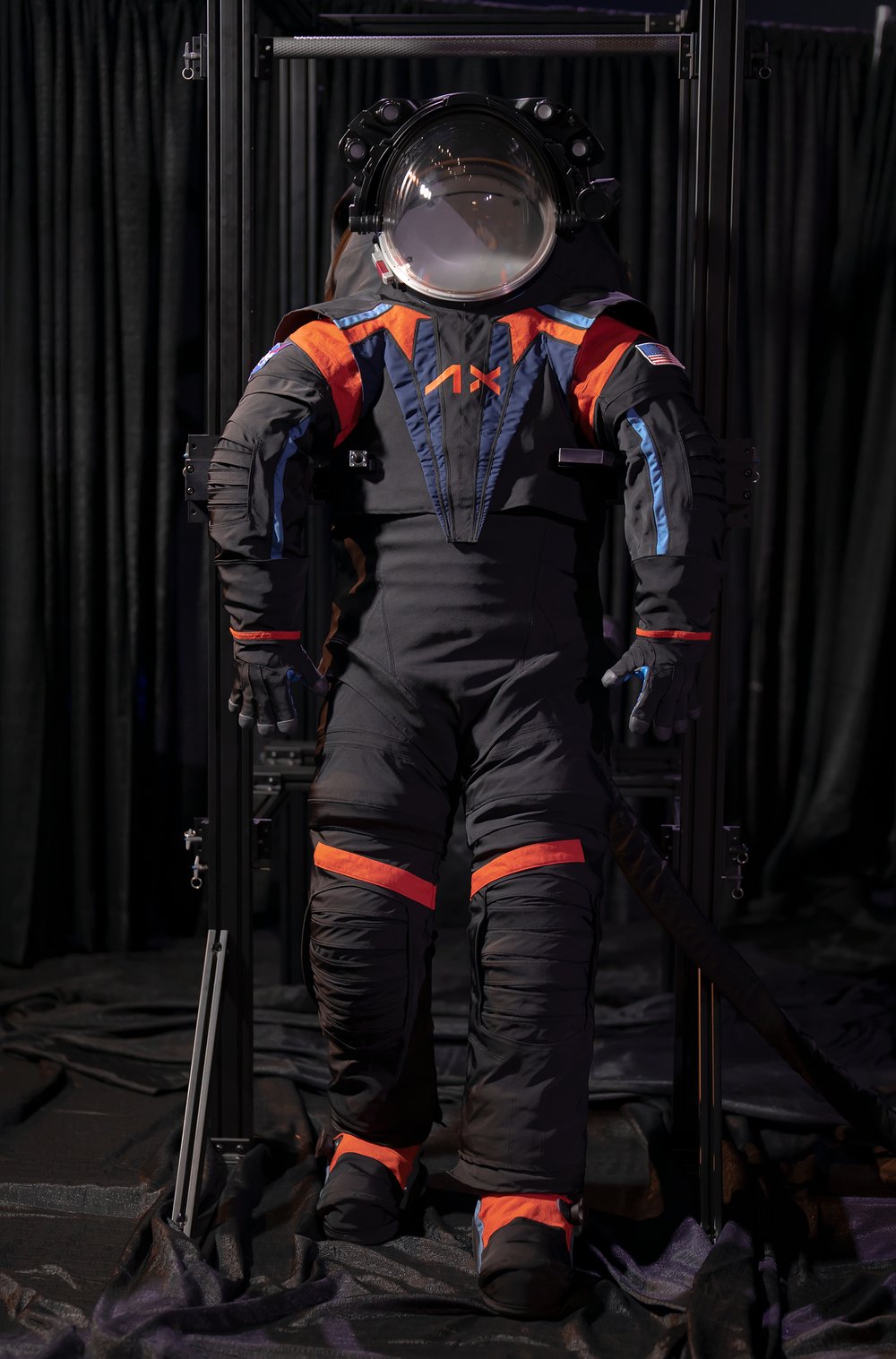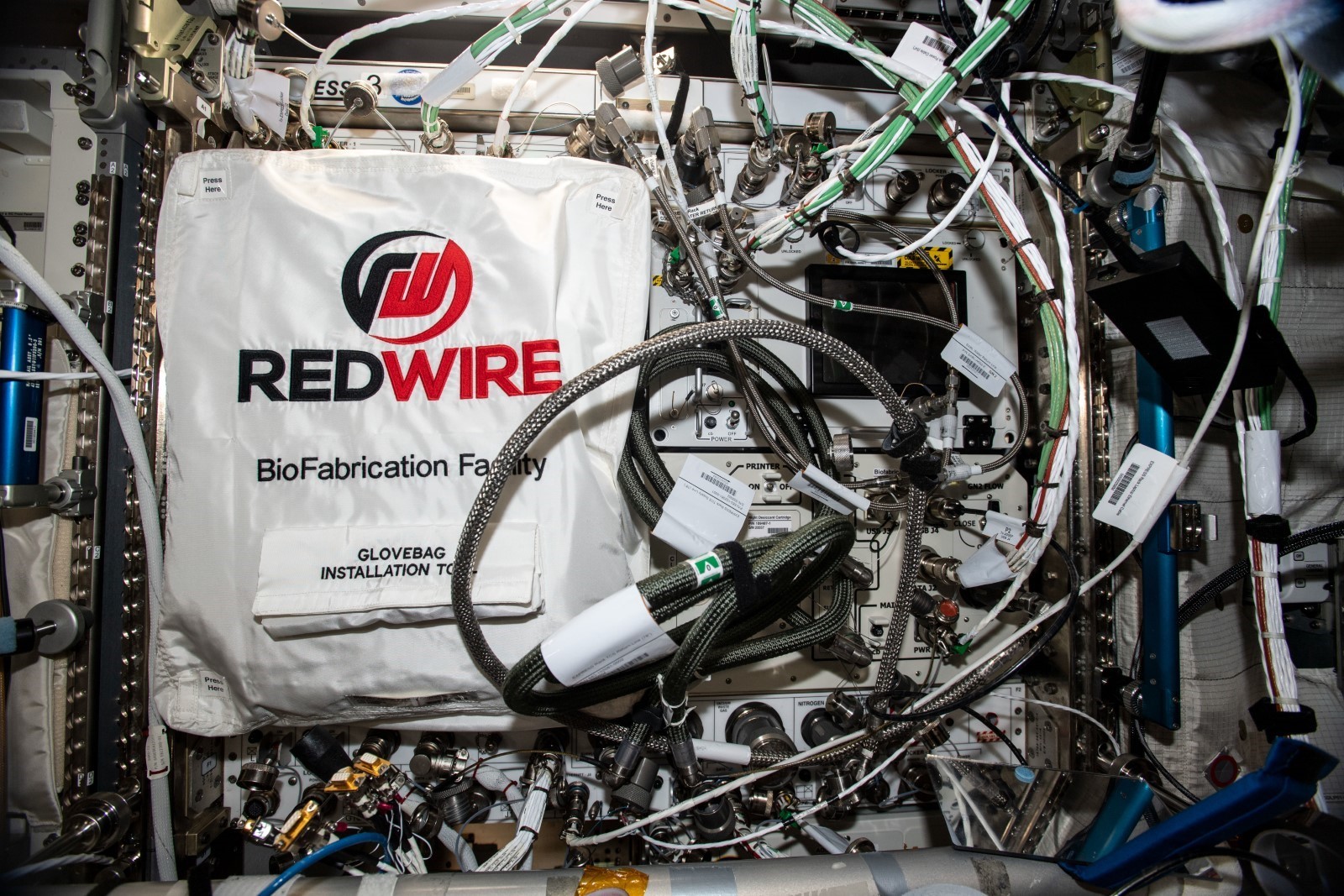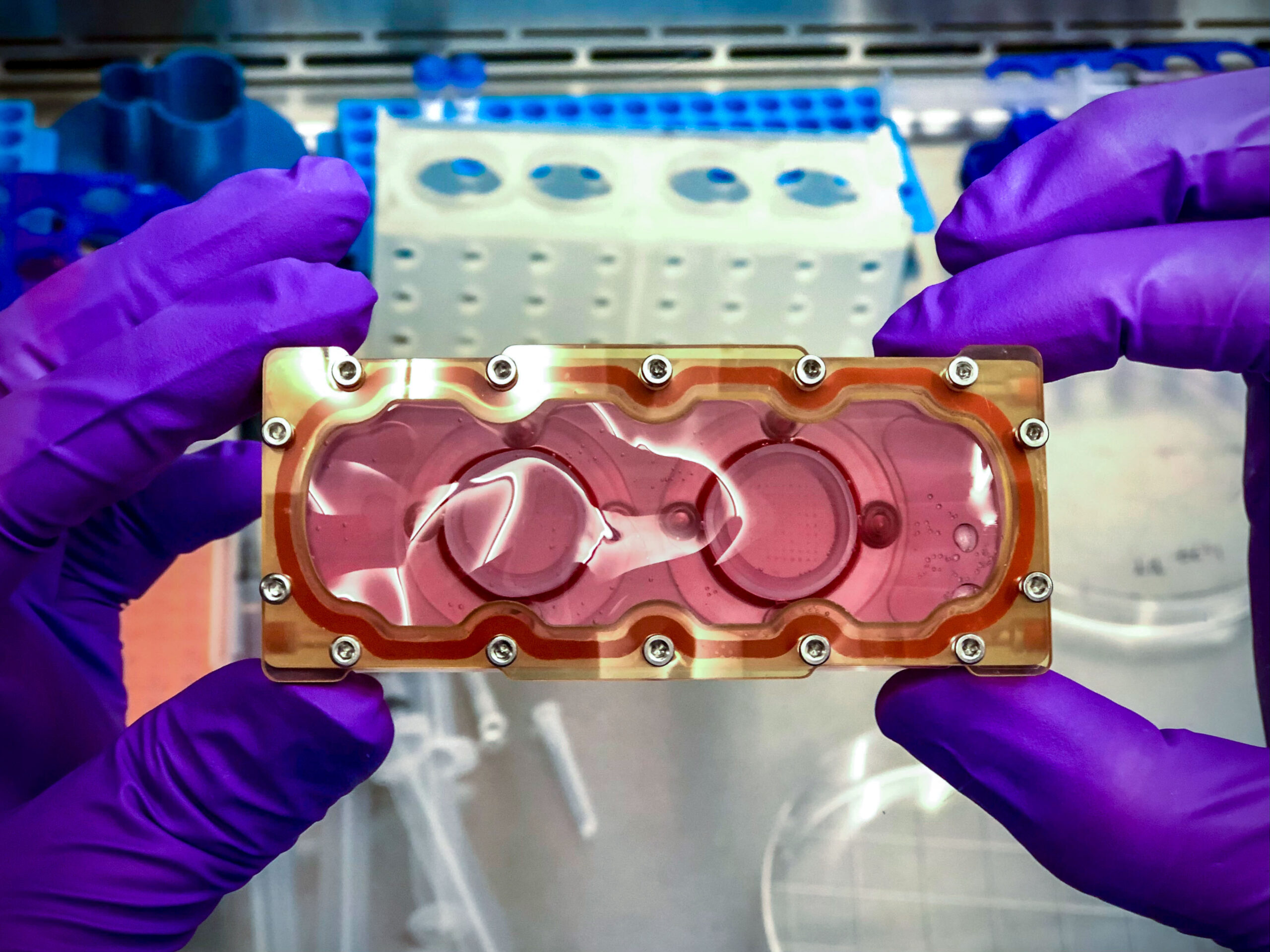Go ahead and take a deep breath because it’s hard to keep up with all the news about 3D printing for space.
Thirty years ago, NASA began using additive manufacturing (AM) for rapid prototyping. Back then, the emerging technology was used to explore possibilities in plastic before building costly parts with metal. Fast-forward to today, 3D printing has gained popularity across the globe signaling new possibilities for manufacturing objects on Earth and in space. Across space agencies, national labs, and businesses, engineers and designers are trying out countless types of 3D printers that work with various plastics and metals.
Just last month, NASA and the International Space Station (ISS) announced six new advances in space that use 3D printing. Let’s take a look at each one.
Axiom lands two NASA missions
Astronauts suit up! Axiom Space just revealed the spacesuits for NASA‘s Artemis III moon mission. This prototype, the Axiom Extravehicular Mobility Unit or AxEMU, will be worn by space crews on the Moon’s surface to help keep them safe and cool while working in one of the harshest environments known to humankind. The Houston-based space firm relies on 3D printing technology to build spacesuit components, saving time and money. During a CBS Mornings walkthrough of the facility where AxEMUs are being created, viewers could see the Axiom team using 3D printers from brands like Stratasys, Prusa, and Formlabs as they move forward with one of the core elements required for the agency’s 2025 mission launch target.

Axiom Space reveals next-generation spacesuit for astronauts returning to Lunar surface. Image courtesy of Axiom.
Established in 2016 to build a commercial space station, Axiom has big plans to become the ISS’ successor and even drive the 3D printing in the space revolution, starting with bioprinting. But before any of that becomes real, NASA has chosen Axiom once again for the third private astronaut station mission launching no earlier than November 2023. One of the facets of these missions includes research, testing, and new technologies for microgravity. As part of the agreement, Axiom astronauts could take scientific samples to orbit, complete science research or perform tasks for the agency. Missions like these contribute to the agency’s low-Earth orbit (LEO) commercialization goal.
NASA awards $15M to AM research
Two new Space Technology Research Institutes (STRIs) will leverage teams led by U.S. universities to create multidisciplinary research and technology development programs in critical engineering and climate research areas. One of the research institutes will work to improve understanding and help enable rapid certification of metal parts created using advanced manufacturing techniques. Each institute will receive up to $15 million over five years.
Carnegie Mellon University will lead the Institute for Model-based Qualification & Certification of Additive Manufacturing (IMQCAM), aiming to improve computer models of 3D printed metal parts and expand their utility in spaceflight applications. Co-led by Johns Hopkins University, the institute will develop digital twins for 3D printed parts made from spaceflight materials commonly used for 3D printing by NASA and the industry, as well as evaluate and model new materials.
Space giant Redwire, a favorite for space 3D printing
Like Axiom, Redwire (NYSE: RDW) has landed many NASA contracts. Lately, the mega aerospace corporation won an agency deal to advance new in-space manufacturing capabilities for journeys to the Moon, Mars, and beyond. Thanks to a $5.9 million contract, the firm will complete the design of its new in-space manufacturing system called FabLab. It is expected to be tested onboard the ISS and serve as a precursor for Artemis missions to the Moon and Mars.
The multi-material 3D printer will allow NASA crews in deep space to manufacture tools and components on demand using materials such as metal, plastic, ceramics, and electronics, enabling a sustainable human presence in orbit.

Redwire’s upgraded 3D BioFabrication Facility successfully installed on the ISS. Image courtesy of NASA.
In addition, last January, NASA astronauts successfully installed Redwire’s upgraded 3D BioFabrication Facility (BFF), which allows greater temperature control when printing with bioinks that are sensitive to temperatures, as well as Redwire’s Advanced Space Experiment Processor (ADSEP), used in conjunction with BFF. The microgravity bioprinter will be used to produce a fully 3D-printed human knee meniscus with the BFF-Meniscus-2 investigation, which will explore how space bioprinting could help treat meniscal injuries affecting U.S. military service members. In the future, BFF could fabricate organs that might one day be used to help patients on Earth.
A new grasp on space
More ISS National Lab-sponsored payloads launched aboard SpaceX’s 27th contracted commercial resupply services mission (CRS-27), including research on cardiac tissue chips, protein crystals, and materials for cost-effective satellites.
An experiment from L3Harris (which will soon become the parent company to Aerojet Rocketdyne) aims to study how 3D printed satellite components hold up in the harsh environment of space. Through this project, L3Harris seeks to test 3D printed radio frequency (RF) circuits, RF communications systems, and other materials for developing smaller, more cost-effective satellites.
The uncrewed Dragon spacecraft, which arrived at the ISS on March 14, 2023, also delivered 3D heart cells and tissue. Better known as the Cardinal Heart 2.0, this experiment builds on results from a previous investigation conducted aboard the space station, which showed that four weeks of microgravity exposure can cause significant changes in heart cell function and gene expression.
Using heart organoids, 3D structures made up of all the different types of cells will test whether clinically approved drugs reduce microgravity-induced changes in heart cell function. Results could support the development of effective drug combinations to improve the health of astronauts and patients on Earth. In addition, the Engineered Heart Tissues-2 study continues work with 3D cultured cardiac muscle tissue to assess human cardiac function in microgravity.

A preflight image of a BioCell developed by BioServe Space Technologies containing 162 beating cardiac spheroids that will be incubated and put under the microscope in space as part of the Cardinal Heart 2.0 investigation. Image courtesy of Drs. Joseph Wu/Dilip Thomas/Xu Cao/Stanford Cardiovascular Institute.
Reimagining space exploration
In other purely commercial space news, Optisys, known for its 3D printed RF (radio frequency) antennas and components, has just announced that its product reached the lunar orbit. This milestone was achieved due to Optisys’ unique low SWaP (size, Weight, and Power) and high-performance capability.
“We are part of many current and upcoming space programs where our antennas are enabling the mission objective. Our antennas are being deployed everywhere from major ground systems and LEO constellations to surface assets destined for planets far beyond the moon,” published Optisys on its LinkedIn site.
If you want to hear more about 3D printing in space, check out 3DPrint.com’s full coverage and editorial take on Relativity Space’s 3D printed rocket, which launched on March 22, 2023.
Subscribe to Our Email Newsletter
Stay up-to-date on all the latest news from the 3D printing industry and receive information and offers from third party vendors.
You May Also Like
WASP to 3D Print in, on, and around Salone del Mobile’s Dropcity Tunnels
Salone del Mobile is the world’s largest and most prestigious design event. This year, Italian additive manufacturing (AM) firm WASP will join the event by 3D printing pieces of the...
Adidas Gifts Messi Custom Shoes in Custom 3D Printed Box
When Lionel Messi received his 8th Ballon d’Or nomination, Adidas wanted to gift him something special. However, the company didn’t just want its gift to be unique, but wanted the packaging...
2024 & Beyond: Navigating Promising Frontiers in 3D Printed Medical Applications
In a time when technological advances and healthcare innovations intersect, the domain of 3D printed medical applications stands at the forefront of a transformative wave. While some of the most...
Ricoh Partners with Materialise to Enhance 3D Printing in Hospitals
Ricoh (TYO: 7752) announced a partnership with Materialise (Nasdaq: MTLS) at the Radiological Society of North America (RSNA) 2023 event. This collaboration aims to make 3D printing more accessible and...
































